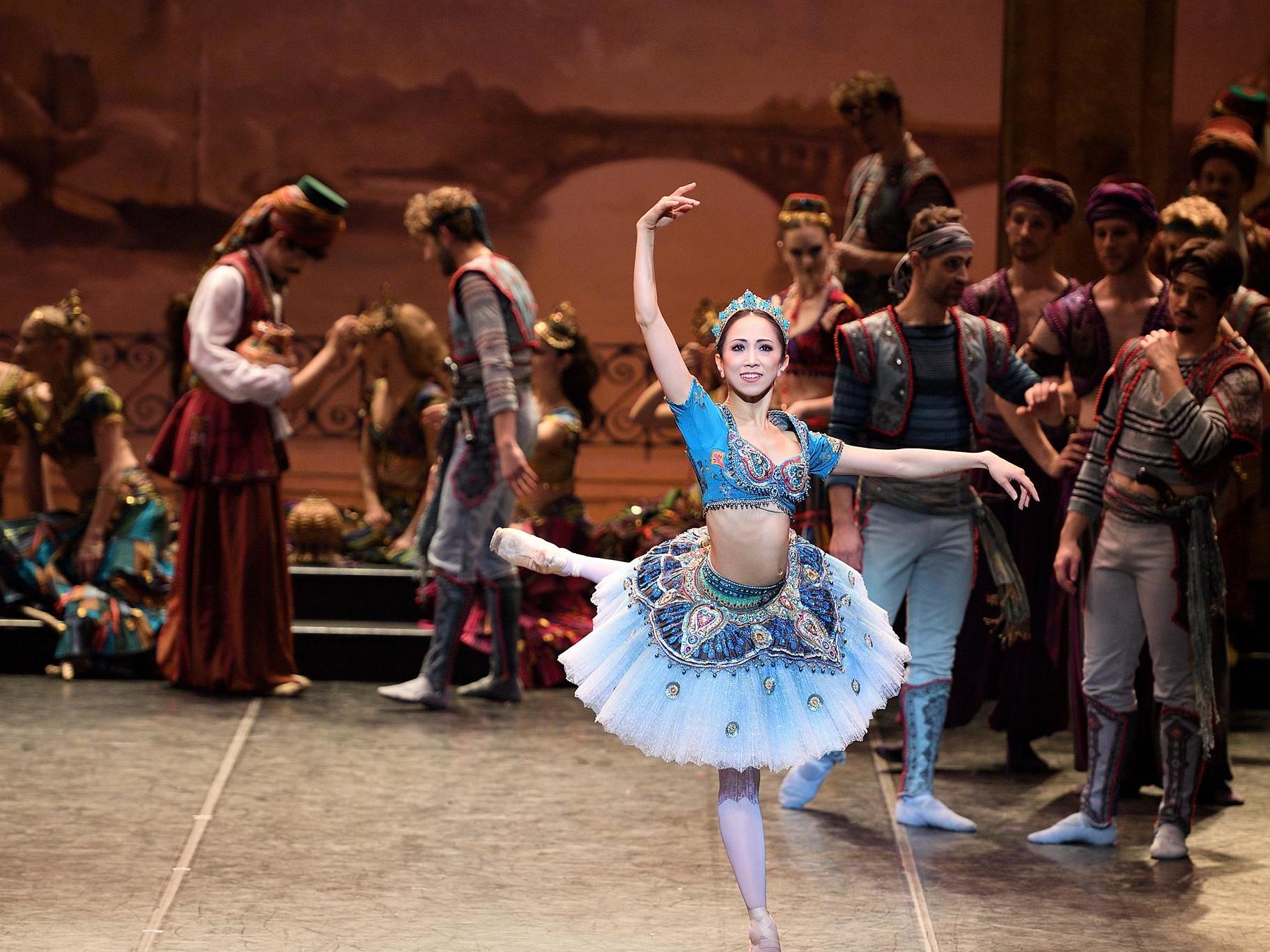Le Corsaire review, London Coliseum: Performed with gusto and packed with bravura steps
This production has worked hard to cut the story’s racist stereotypes

Your support helps us to tell the story
From reproductive rights to climate change to Big Tech, The Independent is on the ground when the story is developing. Whether it's investigating the financials of Elon Musk's pro-Trump PAC or producing our latest documentary, 'The A Word', which shines a light on the American women fighting for reproductive rights, we know how important it is to parse out the facts from the messaging.
At such a critical moment in US history, we need reporters on the ground. Your donation allows us to keep sending journalists to speak to both sides of the story.
The Independent is trusted by Americans across the entire political spectrum. And unlike many other quality news outlets, we choose not to lock Americans out of our reporting and analysis with paywalls. We believe quality journalism should be available to everyone, paid for by those who can afford it.
Your support makes all the difference.It may be January, but ballet’s panto season is still going strong. English National Ballet’s Le Corsaire is a bouncy tale of pirates and pirouettes, a 19th-century fantasy of the east complete with bazaars, a shipwreck and a dream sequence. It’s so like a box of Turkish delight that you wouldn’t be surprised to see a cloud of icing sugar when you take off the lid.
Very loosely based on Lord Byron’s poem, and much revised over time, the ballet is the story of the pirate Conrad and his love for Medora, who is rescued from a slave market before a whole series of kidnappings and escapes.
This revival comes as ballet finally starts to look at its use of 19th-century stereotypes, with initiatives such as #FinalBowforYellowface. Anna-Marie Holmes’ 2013 production has worked hard to cut the racism, reframing characters and incidents – her pirates disguise themselves as merchants, not Muslim pilgrims. The company is careful to remind you of its record commissioning new work by women and people of colour, and to present Le Corsaire as part of ballet’s history.
In the meantime, it performs the ballet with gusto. It’s packed with bravura steps, with plenty of roles to show off a strong line of soloists. On opening night, there were cast changes due to illness, but the bounding jumps and virtuoso turns kept coming. As Conrad, Francesco Gabriele Frola combines large-scale swagger with smooth finish. He’s a strong, supportive partner to Erina Takahashi’s clean-edged Medora, though they do show a little tension in the most extreme lifts.
In the pas de trois, Takahashi was crisp in the spins and triumphant in the grand poses. As Ali – a third wheel so dashing that he replaces the hero when this number gets reworked for galas – Jeffrey Cirio soars and scissor-kicks with splendid assurance.
There’s bold dancing from supporting characters, too. Shiori Kase’s Gulnare is gorgeously nuanced, with soft, full phrasing and delicate musical accents. Precious Adams leads the odalisques with grand, expansive style. As the double-crossing Birbanto, Erik Woolhouse stirs up rebellion with a pirouette and a witty glance at the audience. Brooklyn Mack, playing the wicked Lankedem, shows both spacious authority and pointed detail, highlighting a sharp swing of the foot between a big jump and a mimed demand for payment.
The other man of the match is designer Bob Ringwood, whose luscious sets and costumes make this a shimmering, perfumed fantasy. Gavin Sutherland conducts a cheerful account of the very patchwork score, making the most of its fluffy Delibes waltzes.
Join our commenting forum
Join thought-provoking conversations, follow other Independent readers and see their replies
Comments